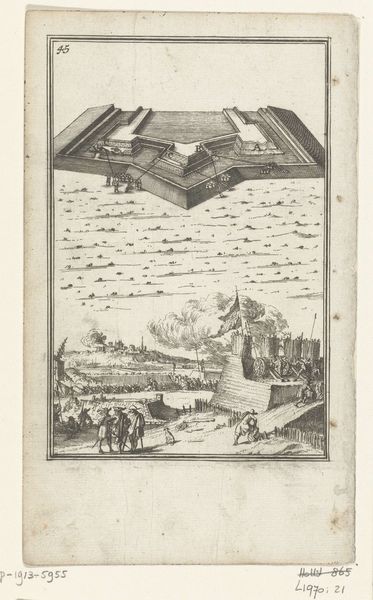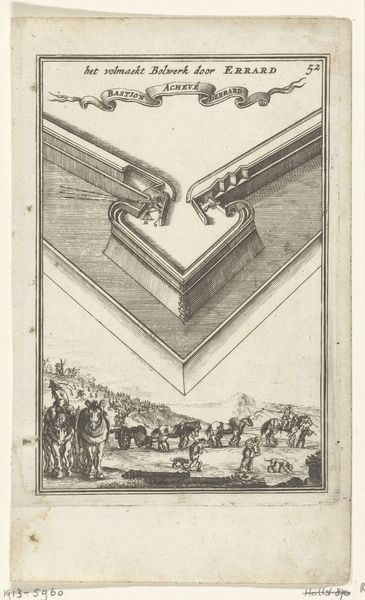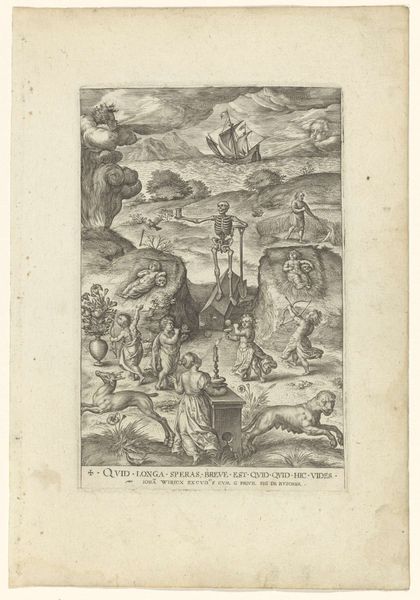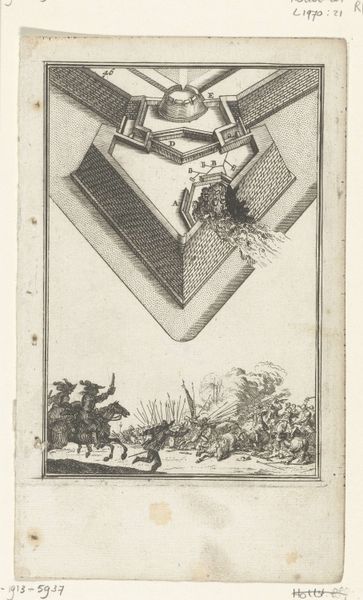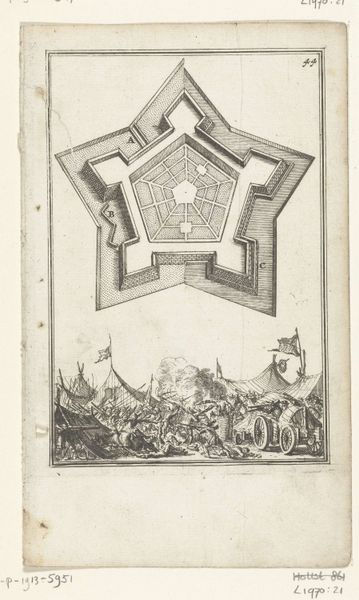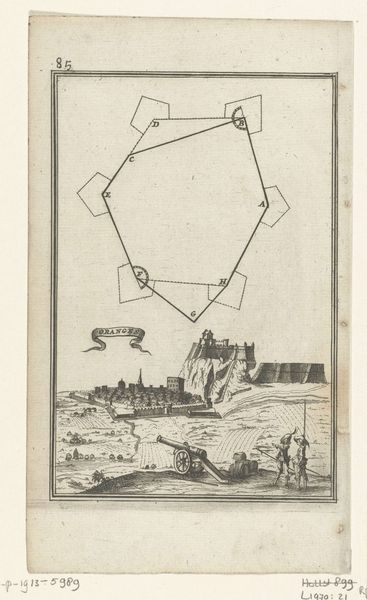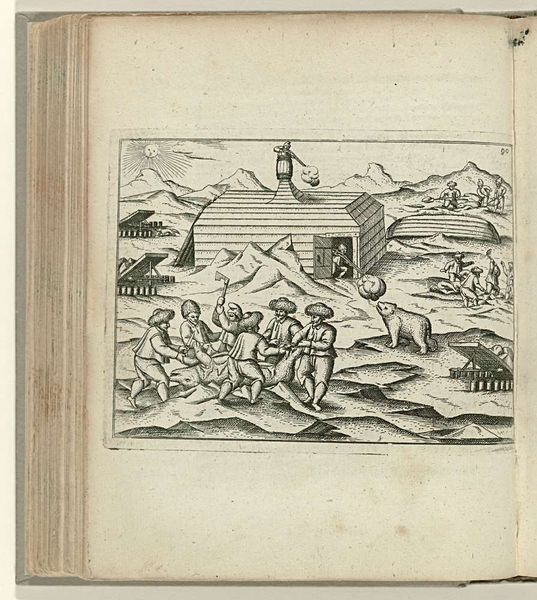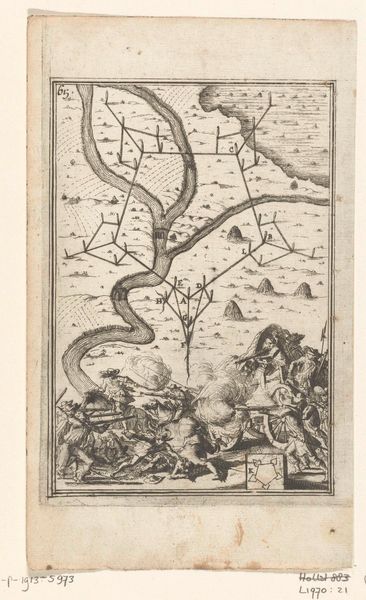
Illustratie voor 'Den Arbeid van Mars' van Allain Manesson Mallet 1672
0:00
0:00
romeyndehooghe
Rijksmuseum
drawing, print, pen, engraving
#
drawing
#
aged paper
#
quirky sketch
#
baroque
# print
#
old engraving style
#
personal sketchbook
#
pen-ink sketch
#
mountain
#
pen and pencil
#
pen work
#
sketchbook drawing
#
pen
#
history-painting
#
storyboard and sketchbook work
#
sketchbook art
#
engraving
Dimensions: height 186 mm, width 111 mm
Copyright: Rijks Museum: Open Domain
This illustration for Allain Manesson Mallet's 'Den Arbeid van Mars' was made by Romeyn de Hooghe, sometime between 1645 and 1708. De Hooghe expertly used etching, a printmaking technique, to create a complex image on a relatively small metal plate. The process involves covering a metal plate with a waxy, acid-resistant substance, and then scratching the design into this layer, exposing the metal beneath. The plate is then dipped in acid, which bites into the exposed lines, creating grooves. Ink is applied to the plate, filling these grooves, and the surface is wiped clean. Finally, the image is transferred to paper under high pressure. Consider the labor involved, and the ways in which the copperplate mediated vision. This print isn't just an image; it's a product of skilled labor, of alchemical interaction between materials. The precision of the lines, the gradations of tone, all speak to de Hooghe's mastery. This artwork, while seemingly modest, opens a window onto the world of early modern print production, and the circulation of knowledge and ideas.
Comments
No comments
Be the first to comment and join the conversation on the ultimate creative platform.
